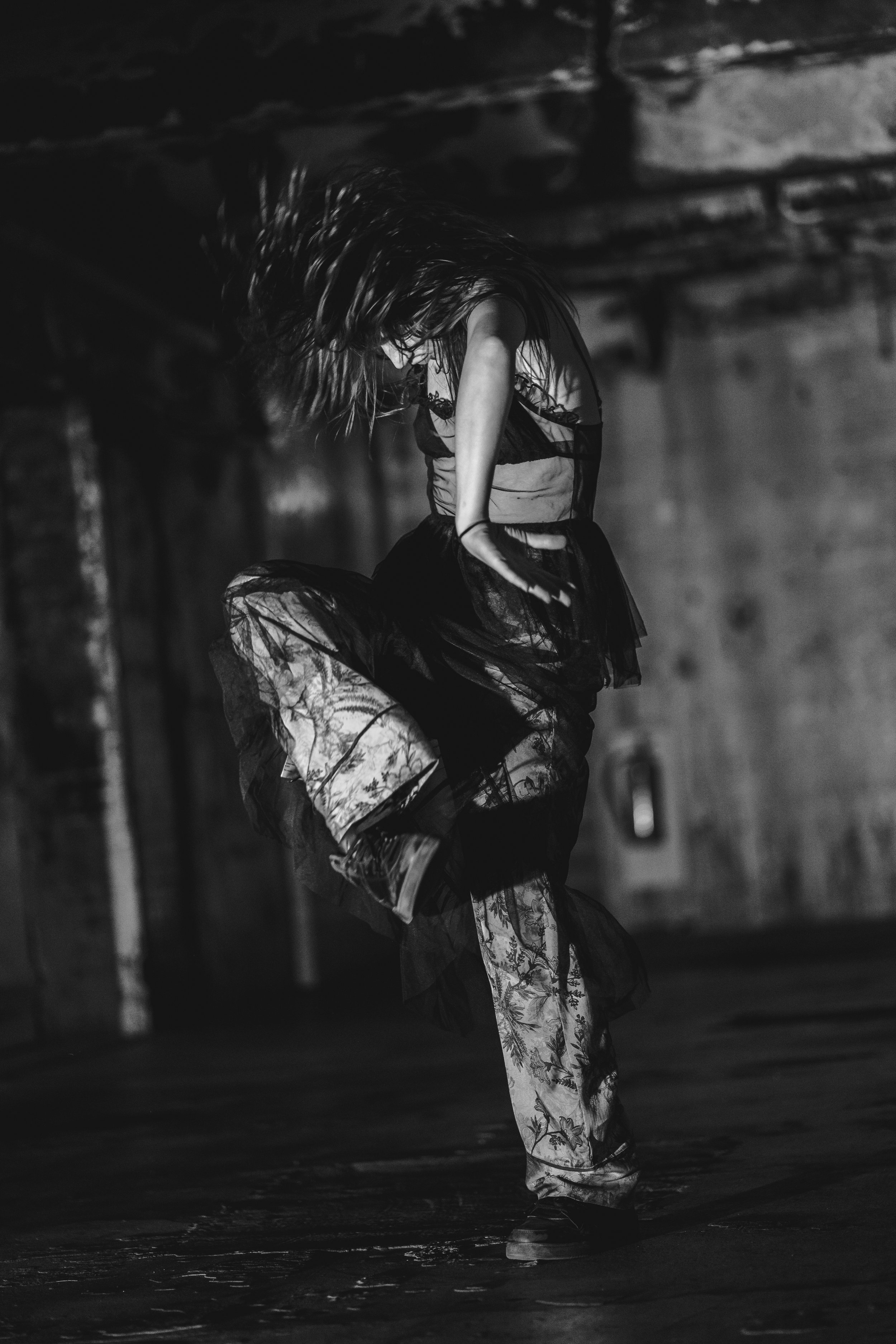BOUND | A Haunting Exploration of Grief and Love in Oxo’s Bargehouse
Words TAYLOR ANDERSON | Images MICHELLE ROSE
Step into the bowels of grief in BOUND, an immersive experience at OXO’s Bargehouse, by Amber Jarman-Crainey. In this all consuming physical theatre production, you are invited to wander alone, follow your curiosity and contemplate your personal relationship with love and loss. Asking your audience to participate in grief is a bold, compassionate feat and one that pays off well.
Nine narratives are presented by nine performers in grungy, vacuous rooms set across four levels of the five storey warehouse. As soon as you enter the building, all of the performances begin simultaneously and it is your job to seek them out. There are no rules and no map. For someone who enjoys a sense of control and a well thought out plan, I felt a deep sense of despair going into it. But after ten minutes, I got used to running after the performers at random and witnessing some of the satisfying overlaps of their stories. Although, at times, I found watching one storyline unfold but also hearing dialogue from another, in the same room or an adjacent hallway, a bit distracting.
Despite the sheer size of the building, no space is left untouched. Even the decaying staircases become the playground of performer Lucija Romanova, who deftly thrashes around in maniacal laughter presenting the story “Subconscious Mind”. Due to the earthy aromas wafting through the floors and the constant low thrum of beating music, composed by Ann Warren, even when you find yourself totally alone, it still feels like you’re in the action.
Each room has been dramatically transformed and the work of set designers Sara Holmes, Susie Carlino and Lara Sanjar, is very impressive; their spaces are filled with large woven bird nests, plastic opaque drapes and real flowering moss. The contrasting surroundings give the impression of stepping into a feverish Inception-like dreamscape.
The narratives I opted to follow for a decent amount of time were: “Therapy” told by Dominic Coffey, “Gaslight” by Angela Harvey, “Living Grief” by Lee Clayden, “Mourning” by Adrienne Ming with snippets of “Rooted Love” by Rosalia Panepinto and Julian Nichols. This list is not to the discredit of the stories “Time” and “Shelter” performed by Madeleine Napier and Vinius Salles. Rather, this underscores that anyone who chooses to embark on BOUND’s journey will leave with having had an experience that is distinctly their own. It feels as if you could visit a hundred times and witness something new you hadn’t seen before.
“Therapy” in particular was something quite special. I was standing on the periphery of a bare-bricked walled room, set out like a therapist’s office. Two chairs faced each other in the centre. The performer took his seat and then physically embodied the vicious inner turmoil of his character, with short bursts of dialogue to audibly orientate us in the narrative. Surprisingly, an audience member then lowered themselves into the therapist’s chair opposite and began nodding, filling in the conversational blanks and becoming part of the scene. I welled up at what I was watching as it tugged at a painful, buried memory. I heard a sniffle, but it wasn’t my own. Close by, a fellow spectator was quietly crying and that’s when I truly understood the impact of BOUND’s subtle but vigorous artistry.
As more opportunities to interact with the performers arose, the usual boundaries between them and the audience, which would typically be defined by the edge of a stage and the first row of seats, became a kind of thin veil. The deliberate lowering of walls felt like an encouragement for us all to engage with grief however it presents. It is an act many of us find too painful or too awkward, but one that Amber Jarman-Crainey implores us to do nonetheless. BOUND is not an experience that everyone will enjoy, but one that will stir something deep within you, and leave you changed by the end.




